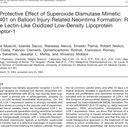Evidence that Serenoa repens extract displays an antiestrogenic activity in prostatic tissue of benign prostatic hypertrophy patients.
Ключови думи
Резюме
A double-blind placebo-controlled study was performed in 35 benign prostatic hypertrophy (BPH) patients never treated before. The patients were randomized into two groups, the 1st (18 cases) receiving Serenoa repens extract (160 mg t.d.) for 3 months up to the day before the operation of transvesical adenomectomy and the 2nd (17 cases) receiving placebo. Steroid receptors were evaluated in the nuclear (n) and cytosolic (c) fraction using the saturation analysis technique (Scatchard analysis or single saturating-dose assay) for androgen (AR) and estrogen (ER) receptors and the enzyme immunoassay (EIA) for ER and progesterone receptors (PgR). Scatchard analysis of ERc and ERn revealed the presence of two classes of binding sites, one with high-affinity low-capacity binding and the other with low-affinity high-capacity binding. In the untreated BPH group, ER were higher in the n than in the c fraction: ERn were positive in 14 cases and ERc in 12 of 17 cases. In the BPH group treated with S. repens extract on the contrary, ERn were negative for both binding classes in 17 cases and ERc in 6 of 18 cases. Using EIA, ERn and ERc were detected in all 15 samples examined, but in the treated group, ERn were significantly (p less than 0.01) lower than in the untreated group, whilst ERc remained almost unchanged. Similar results were obtained measuring PgR: the n fraction of the treated group prostatic samples was significantly (p less than 0.01) lower than that of the untreated group.(ABSTRACT TRUNCATED AT 250 WORDS)



